E-learning Training : From Design to Application
- Designing an Effective Pedagogical Path in E-learning
- The Challenges Faced by the E-learning Designer
- E-learning vs. Traditional Training
- Andragogy and E-learning
E-learning has transformed the face of traditional training, ushering in a new era where geographical distance is no longer a barrier to learning. Behind every engaging online course is an E-learning Designer with a deep understanding of pedagogical principles and how technology can enhance them.
Designing an Effective E-learning Curriculum
The primary task of an E-learning Designer is to create content that resonates with each learner.
This level of personalization requires a deep understanding of individual needs and preferences.
Interactivity is also at the heart of the design process. Rather than merely presenting facts, the designer must aim to engage learners through quizzes, case studies, or even simulations.
Every course element—whether a video, text, or activity—should be carefully crafted to enhance understanding and encourage critical thinking.
The Challenges of the E-learning Designer
The role of an E-learning Designer comes with its share of challenges. Every learner brings a unique set of experiences, skills, and expectations. This means that the content must be flexible enough to meet these diverse needs.
Technology, which is constantly evolving, is both an asset and a challenge. Methods that were effective a year ago can quickly become outdated.
Finally, collecting feedback is essential. E-learning offers a unique opportunity to adjust and improve content based on user responses, ensuring an optimal learning experience.
E-learning vs. Traditional Classroom Training
If e-learning offers unmatched flexibility, it also requires a different approach to instructional design. The absence of a physical instructor means that the e-learning designer must find alternative ways to facilitate interactions, create a sense of community, and ensure follow-up with learners. This can be achieved through active discussion forums, live webinars, or even video tutorials. The challenge is to replicate, as much as possible, the dynamics of a traditional classroom in a virtual environment. Discover our tailored training our tailored training sessions to help you develop these essential skills.
Andragogy and E-learning

The andragogical approach, focused on adult education, is particularly relevant in e-learning. Unlike young learners, adults rely on their past experiences to build new knowledge. Therefore, the E-learning Designer must ensure that the content not only introduces new learning but also provides opportunities to connect this new information with what the learner already knows. This not only strengthens retention but also boosts motivation, as the learner immediately sees the relevance of what they are learning.
Conclusion
The landscape of education is undergoing a major transformation, with e-learning playing a key role. For those who embrace the career of an E-learning Designer, the challenge is great, but so are the rewards in terms of impact and satisfaction. By staying at the forefront of educational principles and continually adapting to the needs of learners and technological advancements, they can truly transform the way we learn.
1. What are the main challenges encountered when implementing an e-learning training program ?
Implementing an e-learning training program comes with several challenges, including:
- Learner engagement: Maintaining participants’ interest and motivation without in-person interaction can be complex.
- Technological adaptation: Ensuring that all learners have the necessary digital skills and access to online tools.
- Content quality: Designing interactive and relevant modules that meet educational objectives.
- Evaluation of effectiveness: Learner engagement: Maintaining participants’ interest and motivation without in-person interaction can be complex.
2. How can the effectiveness of e-learning training be measured?
The effectiveness of e-learning training can be evaluated through:
-
Quantitative analysis: Module completion rates, assessment scores, participation rates.
-
Qualitative feedback: Learners’ comments on the relevance and quality of the content.
-
Skills transfer: Observation of how acquired knowledge is applied in the workplace.
-
Return on Investment (ROI): Analysis of the benefits gained in relation to the costs incurred for the training.
3. Quelles sont les tendances actuelles en matière de formation e-learning ?
Les tendances actuelles en e-learning incluent :
- Micro-apprentissage : Modules courts et ciblés facilitant l’assimilation rapide de concepts.
- Mobile learning : Accès aux formations via des appareils mobiles pour une flexibilité accrue.
- Apprentissage adaptatif : Contenus personnalisés en fonction des performances et des besoins de l’apprenant.
- Intégration de la réalité virtuelle (VR) et augmentée (AR) : Immersion des apprenants dans des environnements simulés pour des expériences pratiques.
- Utilisation de l’intelligence artificielle (IA) : Personnalisation des parcours d’apprentissage et assistance aux apprenants.

























